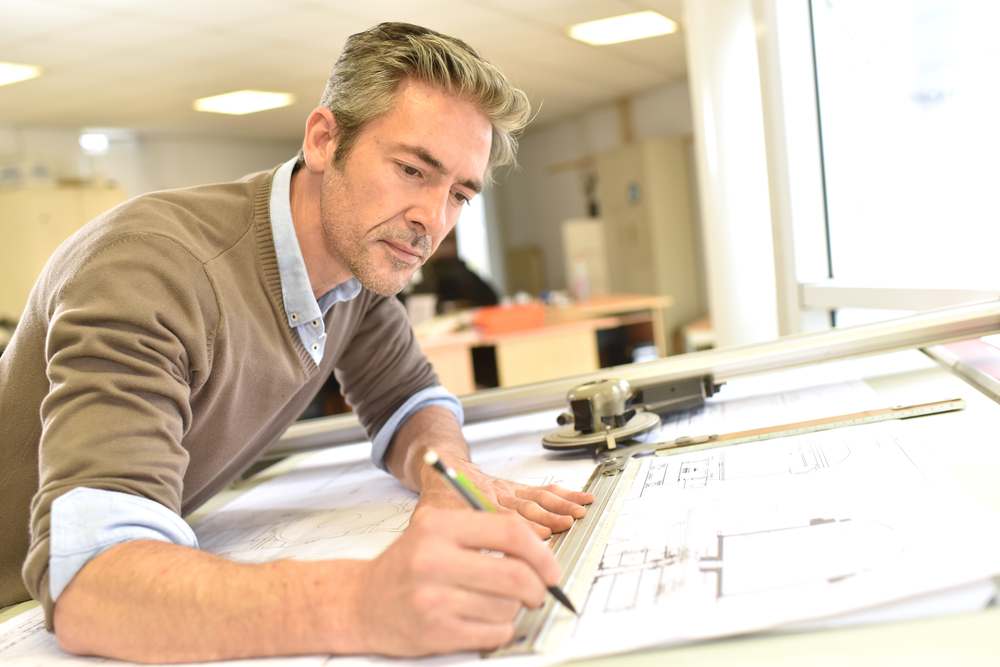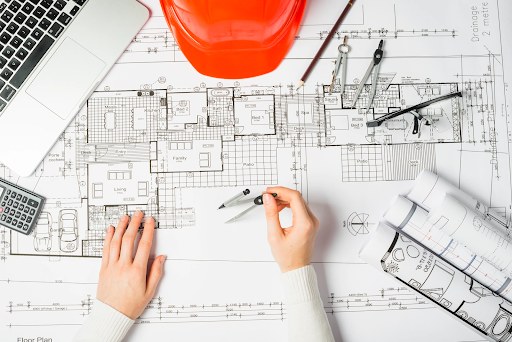Architect Guide to Eco-Friendly Building Materials
Architect Guide to Eco-Friendly Building Materials
Blog Article
Understanding the Diverse Career Paths Available for Aspiring Architect
As a hopeful Architect, you have a world of job courses waiting for you. Each path uses distinct difficulties and opportunities to use your creativity and technological know-how. Whether you're attracted to standard design or the subtleties of lasting layout, there's a niche that aligns with your passions. Comprehending these diverse choices can form your specialist trip, but which direction will you choose to discover first?
Typical Style: Designing Structures and Structures
Traditional style concentrates on creating buildings and structures that blend functionality with aesthetic charm. As you explore this area, you'll appreciate the complex balance in between form and function. You'll discover to draw ideas from historic designs, integrating elements like proportion, materials, and craftsmanship. Your designs can show cultural heritage, showcasing local practices while meeting modern requirements.
You'll create skills in preparing, model-making, and site evaluation, enabling you to visualize and communicate your ideas properly. Involving with clients, you'll need to understand their vision and convert it into feasible styles.
Moreover, constructing codes and sustainability methods are crucial in your work, ensuring your structures are environmentally friendly and safe. As you expand in your career, you'll locate chances in residential, business, or also remediation jobs, each offering special difficulties. Accepting standard design paves the means for a meeting occupation that admires the past while forming the future.
Urban Planning: Forming Neighborhoods and Public Spaces
As a hopeful Architect, you can play a crucial function as a city organizer, changing exactly how communities interact and function. By using community interaction techniques, you'll guarantee that locals have a voice fit their setting. Plus, integrating lasting style principles will help produce spaces that not only meet today's needs yet also safeguard the future.
Duty of Urban Planners
While lots of may consider engineers as the sole dreamers behind structures, metropolitan coordinators play a crucial duty in forming the broader landscape of areas and public spaces. They examine land usage, zoning regulations, and area requires to develop lasting environments that boost lifestyle. By working together with various stakeholders, you'll aid create parks, transport systems, and houses that advertise social interaction and accessibility. Urban planners additionally focus on ecological factors to consider, guaranteeing that developments incorporate green rooms and assistance biodiversity. Your knowledge in spatial layout and community dynamics enables you to picture future development while protecting cultural heritage. In this crucial duty, you'll directly affect how people experience their surroundings, making every job an opportunity for positive adjustment.
Community Engagement Methods
Reliable community involvement approaches are essential for city coordinators to guarantee that the voices of locals are heard and valued in the preparation procedure. To foster meaningful discussion, you ought to prioritize open discussion forums and workshops where neighborhood members can reveal their ideas and worries. Use studies and social media sites to get to a more comprehensive audience, making certain diverse perspectives are consisted of. Collaborating with neighborhood organizations can boost trust and assist in much deeper links. It is necessary to offer clear info regarding decision-making processes and suggested tasks, enabling homeowners to really feel enlightened and encouraged. By actively listening and integrating responses, you'll create areas that mirror the community's requirements, ultimately resulting in more sustainable and effective urban environments. Welcome transparency and continuous dialogue for lasting impact.
Sustainable Style Principles
When creating metropolitan spaces, incorporating lasting style principles is critical for producing atmospheres that thrive both environmentally and socially. You should begin by focusing on energy efficiency, using products that minimize waste and advertise recycling. Take into consideration integrating environment-friendly rooms, like parks and yards, to enhance biodiversity and improve air top quality. Promoting walkability and public transportation can minimize reliance on autos, fostering a healthier area.
Creating with water preservation in mind is additionally crucial-- consider rain yards and permeable surface areas to handle stormwater. Involving area members throughout the planning process assurances that the spaces you create fulfill their needs and urge social communication. By embracing these concepts, you'll add to vivid, sustainable city landscapes that profit everyone.

Landscape Architecture: Producing Sustainable Outside Settings
As you check out landscape design, you'll discover essential layout concepts that create practical and lovely outside areas. Sustainable practices play an essential function in guaranteeing these atmospheres thrive while minimizing environmental influence. And also, you'll discover a selection of job opportunities that enable you to make an actual distinction in exactly how individuals connect with nature.
Style Principles in Landscape
Understanding style concepts in landscape design is crucial for creating lasting outside environments that harmonize with nature. You'll need to ponder components like equilibrium, percentage, and scale to guarantee your layouts feel cohesive and welcoming. Including indigenous Clicking Here plants not just boosts biodiversity but also decreases water use, making your landscape resistant. Think of the flow of area and just how individuals interact with it; pathways and seating areas must welcome expedition and relaxation. In addition, take note of seasonal adjustments, designing with materials that enhance the surroundings year-round (Architect). By prioritizing sustainability and visual appeals, you can produce outside spaces that enhance the area and advertise wellness. Welcoming these principles will certainly establish a strong foundation for your occupation in landscape style.
Sustainable Practices Overview
Lasting techniques in landscape architecture not only focus on visual appeals however likewise focus on environmental health and source conservation. You can create rooms that advertise dirt health, such as practicing and using natural products permaculture concepts. Ultimately, these practices ensure your designs profit both people and the environment for years to come.
Job Opportunities Exploration
With a solid foundation in lasting techniques, landscape design provides a selection of job paths that allow you to make a significant influence on the environment. Urban planners frequently work together with landscape designers to produce green spaces in urban settings, boosting city livability. If you're enthusiastic regarding education and learning, take into consideration becoming a landscape architecture instructor, motivating future generations.
Lasting Design: Concentrating on Eco-Friendly Practices
As you explore your profession in design, accepting environment-friendly techniques can establish you apart in an affordable area. Lasting layout concentrates on creating buildings that reduce environmental influence while improving resident well-being. By incorporating eco-friendly materials, energy-efficient systems, and sustainable building methods, you'll add to a greener future.
Begin by gaining knowledge of eco-friendly accreditations like LEED or BREEAM, which can strengthen your qualifications. Consider exactly how natural light, ventilation, and thermal efficiency can maximize style. Collaborate with designers and ecological specialists to introduce services that minimize waste and conserve sources.
Don't fail to remember the relevance of area participation-- appealing local stakeholders can influence designs that harmonize with the environment. As clients increasingly prioritize sustainability, your experience in eco-friendly practices will certainly not just bring in tasks but likewise meet your interest for accountable design. Embrace this essential facet of the career, and view your occupation prosper.
Historic Preservation: Shielding and Recovering Cultural Heritage
While you begin on your architectural journey, take into consideration the crucial role of historic preservation in keeping our cultural heritage. This area concentrates on the security and remediation of considerable structures, websites, and structures that tell the stories of our past. By participating in historical conservation, you'll assist protect the architectural heritage that forms neighborhood identity.
As a historical preservation Architect, you'll evaluate historic value and evaluate the condition of structures. You'll work carefully with conservationists and historians to guarantee genuine restoration techniques are utilized. This job path enables you to mix imagination with research study, enabling you to design options that respect original materials and craftsmanship.
Your work not only adds to sustainability by reusing existing buildings however additionally cultivates a this post feeling of satisfaction within neighborhoods. Embracing this path will aid you become a guardian of background, preserving the tales and aesthetic appeals that enrich our lives.
Interior Design: Enhancing Indoor Spaces
Historic preservation and indoor style both share a dedication to improving the developed atmosphere, however they concentrate on different elements. While historic preservation emphasizes maintaining a structure's social and historic worth, indoor style nos in on maximizing indoor rooms for functionality and looks.
As a hopeful Architect, you'll find that indoor design permits you to mix creativity with technological abilities. You'll design spaces that not only look excellent but also advertise comfort and performance. This area involves comprehending exactly how light, shade, and products engage within an area, affecting state of mind and functionality.
You'll work with numerous projects, from household homes to industrial offices, making certain that each environment meets the requirements of its owners. By prioritizing customer experience, you can change interiors into practical and motivating spaces, making a substantial influence on how people interact with their environments. Accept the possibility to boost indoor atmospheres and form the way people live and work.
Industrial Layout: Combining Performance With Looks
Industrial style plays a vital function in creating products that effortlessly mix appearances with functionality, ensuring that what you utilize everyday is not just aesthetically appealing however additionally sensible. As an aspiring Architect, you might immerse on your own in this field, concentrating on designing every little thing from furnishings to consumer electronics. Your job includes understanding individual requirements, products, and making procedures, allowing you to create cutting-edge options that boost day-to-day experiences.
In commercial layout, you'll frequently work together with online marketers, producers, and engineers, guaranteeing that your styles are not only gorgeous however likewise possible. This occupation course uses a vibrant environment where creative thinking fulfills usefulness, making it a gratifying selection for engineers interested in shaping the items of tomorrow.
Often Asked Questions
What Educational Credentials Do I Required to End Up Being an Engineer?
To come to be an engineer, you'll require a specialist degree in style, normally a Bachelor's or Master's. Additionally, you'll have to complete a teaching fellowship and pass the Architect Enrollment Examination to exercise lawfully.
Are There Certification Demands for Different Building Job Paths?
Yes, there're accreditation requirements for different building courses. Architect. You'll need to pass tests, full internships, and occasionally seek specialized training, depending upon your chosen focus, like landscape style, metropolitan style, or historical conservation
What Software Program Abilities Are Important for Architects Today?

How Can I Gain Practical Experience While Studying Architecture?
You can get useful experience by interning at building firms, getting involved in style competitions, volunteering for community projects, or teaming up with schoolmates on real-world tasks. These possibilities boost your skills and develop beneficial connections in the market.
What Task Opportunities Exist Outside Standard Architecture Firms?
You can discover various job possibilities outside conventional design firms, like metropolitan preparation, indoor design, landscape style, building and construction monitoring, actual estate advancement, and even duties in sustainability consulting. Each deals special difficulties and benefits.
Whether you're drawn to typical architecture or the subtleties of lasting layout, there's a niche that straightens with your interests.When making metropolitan rooms, integrating sustainable style concepts is important for producing atmospheres that thrive both environmentally and socially.As you explore landscape style, you'll discover vital style concepts that read develop stunning and practical exterior rooms.Recognizing design principles in landscape architecture is necessary for producing sustainable exterior atmospheres that balance with nature.In industrial design, you'll usually work together with marketers, producers, and designers, making sure that your styles are not just beautiful but likewise practical.
Report this page